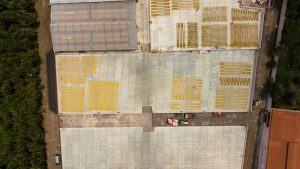Earthquake-Resistant Buildings: Advanced Materials and Techniques
Earthquakes have been a natural phenomenon that has been documented throughout history. With varying magnitudes and frequencies, these powerful seismic events have caused devastating consequences, especially in highly populated areas. Buildings, being a prominent feature of urban landscapes, are often the most vulnerable structures when faced with earthquakes. However, advancements in technology and the use of new materials have allowed engineers to design earthquake-resistant buildings that can withstand these powerful forces. In this article, we will explore the concept of earthquake-resistant buildings and the advanced materials and techniques used in their construction.
The Basics of Earthquake-Resistant Buildings
Earthquake-resistant buildings, also known as seismic-resistant buildings, are structures designed to withstand the effects of an earthquake, minimizing damage to the building and protecting its occupants. These buildings are designed to absorb and dissipate the energy generated by an earthquake, reducing its impact on the building and its inhabitants. The goal of earthquake-resistant building design is to ensure the safety of the occupants and prevent any severe structural damage.
Structural Design Features
The key to constructing an earthquake-resistant building lies in its structural design. Engineers use various strategies and techniques to ensure that the building can withstand the powerful forces of an earthquake. One such technique is base isolation, which involves using a flexible base between the building and the ground. This base allows the building to move during an earthquake, reducing the impact of the seismic waves. Another design feature is the use of shear walls, which are reinforced concrete walls that provide structural support to the building, preventing it from collapsing.
The Role of Damping
Damping refers to the ability of a material to dissipate energy and prevent it from being transferred to other structural elements. In earthquake-resistant buildings, damping plays a crucial role in reducing the building’s response to seismic waves. This is achieved by using materials such as rubber, steel, or lead, which absorb the energy generated by the earthquake. Damping devices called seismic dampers are also installed in the building’s structure to reduce its overall movement during an earthquake.
Advanced Materials Used in Earthquake-Resistant Buildings
Fiber-Reinforced Concrete
Traditional concrete is a brittle material that can easily crack under stress, making it unsuitable for earthquake-resistant buildings. However, advancements in technology have led to the development of fiber-reinforced concrete (FRC), which contains small fibers such as steel, glass, or synthetic materials. These fibers improve the material’s tensile strength and ductility, making it more resistant to cracking. FRC is also more resistant to fire and corrosion, making it an ideal material for earthquake-resistant buildings.
Base Isolation Materials
As mentioned earlier, base isolation is a crucial design feature in earthquake-resistant buildings. The material used in base isolation is usually a high-damping rubber bearing, which can deform and absorb a significant amount of energy during an earthquake. These bearings are placed between the building’s foundation and its structure, isolating the building from the ground’s movement. High-damping rubber bearings are also cost-effective and can be easily replaced if damaged during a seismic event.
Shape Memory Alloys
Shape memory alloys (SMA) are a group of materials that have the ability to recover their original shape after being deformed. These alloys are used in earthquake-resistant buildings to reinforce structural elements such as columns, beams, and walls. During an earthquake, the SMA elements are designed to yield and dissipate energy, reducing the overall stress on the building. Once the seismic event has passed, the SMA elements return to their original shape, restoring the building’s structural integrity.
Conclusion
In conclusion, earthquake-resistant buildings are a result of constant research and advancements in construction technology. By using advanced materials and techniques, engineers can design buildings that can withstand the powerful forces of an earthquake, ensuring the safety of its occupants. As technology continues to evolve, we can expect to see further improvements in earthquake-resistant building design, making our cities safer and more resilient to seismic activities.











